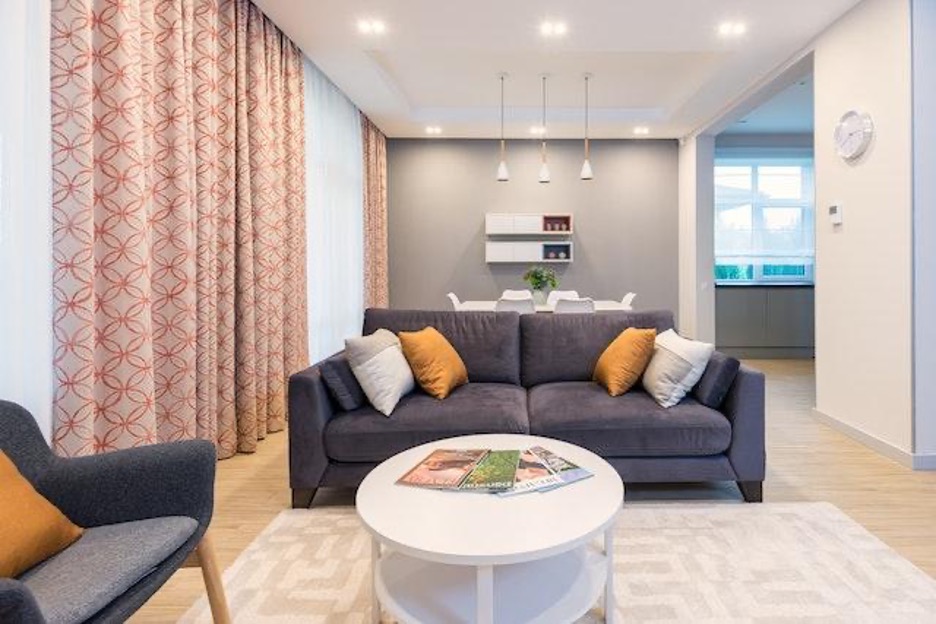

Finding the right furniture pieces and figuring out the perfect way to decorate is perhaps the first thing on your mind when making a big move. Moving into a furnished apartment has both its benefits and disadvantages, but if you are new to the concept you might now know where to start to find meaningful information.
Are you apartment hunting? Considering renting a furnished apartment? Here’s what you should expect and what to know before diving in!

Image via Pexels
What is a Furnished Apartment?
Having furniture in your apartment is a necessity, but sometimes during the process of the move, buying and moving furniture can be a stressor. Furnished apartments can alleviate this added worry, but what exactly constitutes a furnished apartment?
Most of the time, a furnished apartment will include a bed, dresser, typical kitchen appliances, and living room furniture. When considering where to move and what place to pick, it is important to take into consideration the perks and disadvantages of renting an apartment that is already furnished.
Renting a Furnished Apartment: What to Know
1. You Don’t Have to Move Furniture: A big stressor when moving into an apartment is physically moving furniture. For some items, like lamps or small pieces of furniture, this is not a big deal. For others, like sofas, mattresses, large appliances like refrigerators, etc., this can be difficult if you don’t have the help, the right sized car to move the items or the time to do it all. Additionally, if you don’t have adequate help, you might resort to hiring movers to assist you, which can end up costing money in the long run. As a furnished apartment already has the larger furniture and bulky appliances set up, you don’t have to worry about moving anything!
2. Rent May Be Pricier: While the upfront cost of renting a furnished apartment is lower, you may end up paying more in the long run. Due to the ‘luxury’ of a furnished apartment, the average monthly cost of rent can be pricier than an unfurnished one, with long-term rentals costing around 15 to 20 percent more, and short-term costing approximately 40 to 50 percent more. While the convenience of already having furniture in your apartment is appealing, you have to evaluate if you have the ability to spend more on this added luxury.
3. Be Wary of Liabilities: When renting any type of apartment or home, there are certain things that you as the tenant are liable for. With a furnished apartment, because there are more items that are owned by your landlord, there are more liabilities that you are held to. It is your responsibility as the tenant to maintain the cleanliness of the furniture items as well as ensure they are not damaged during your lease term. If any of the furnishings included in the apartment are damaged, you may not receive your security deposit back or have to pay for the damages, depending on the lease.
4. There is a Lack of Interior Decorating Choices: Moving into a new place is fun and exciting for several reasons, one being that you have the freedom to decorate the place with your own furnishings and artwork. If you opt for a furnished apartment, the furniture included in the apartment may clash with your personal style, leaving the space to feel less like your home and more like someone else’s. Of course, you can include personal touches here and there to help avoid this feeling, like hanging pictures with paint-safe tape or decorating with fun-colored pillows and blankets!
5. You Can Have Moving Flexibility: If you are a student or someone who perhaps relocated for work/personal reasons, looking for short-term rentals can feel overwhelming as so many apartment complexes have long-term leases. Another great perk of a furnished apartment is that most of the time, places like these are advertised as short-term rentals. With a furnished apartment, there is no worry about buying new furniture or measuring the length of the couch you want to buy to make sure it fits in your door. Everything is already set up!
When considering renting a furnished apartment, there are a handful of factors to evaluate. It may seem overwhelming to weigh these options, so remember to take the time to adequately consider the benefits and disadvantages of doing so to make a decision that is most appropriate for you and your circumstances, both personally and financially!



 Equal Housing Opportunity
Equal Housing Opportunity

